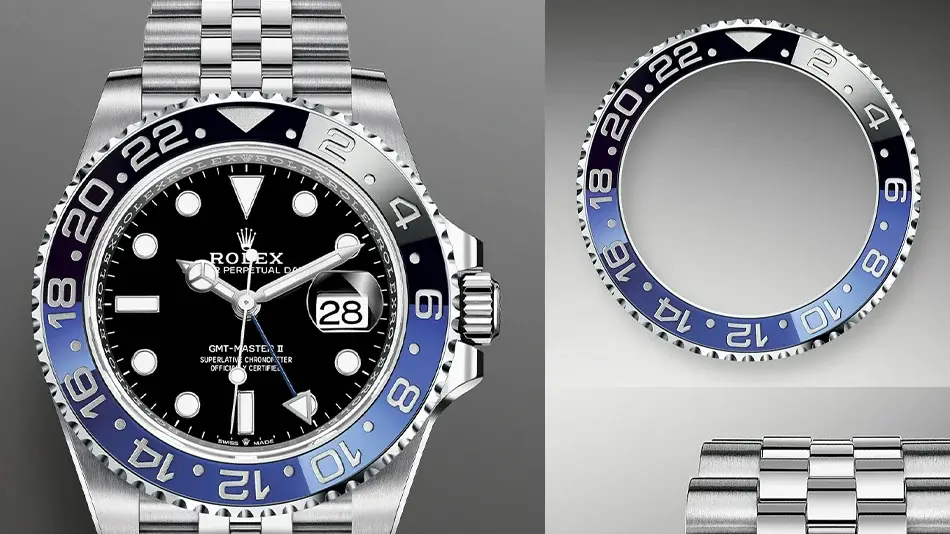Blog
“Understanding Watch Bezel Functions and Styles”
The bezel is one of the most essential components of a watch, not only for its aesthetic appeal but also for its functionality. Positioned around the watch face, it holds the crystal in place and serves multiple purposes, from tracking elapsed time to providing additional features for specific activities. Whether you’re a seasoned watch collector or a first-time buyer, understanding the different bezel functions and styles can help you select a timepiece that best fits your needs and preferences.
In this article, we’ll delve into the various types of watch bezels, their functions, and the role they play in different types of watches.
What is a Watch Bezel?
A watch bezel is the ring that surrounds the watch face, which holds the crystal (the glass covering the dial) in place. Bezels can be fixed or rotating, depending on the watch’s design and intended purpose. While many bezels are purely decorative, others are packed with functionality and features that make them useful for specific activities, such as diving, aviation, or racing.
Basic Bezel Styles
Bezels come in various styles and are often tailored to particular uses. Here’s a breakdown of the most common types:
1. Fixed Bezels
As the name suggests, fixed bezels do not rotate and are primarily decorative. They often feature markings or engraved designs, contributing to the overall aesthetic of the watch.
Common Functions of Fixed Bezels:
- Design Enhancement: Many watches use fixed bezels to enhance the appearance of the timepiece. Examples include textured metal bezels on dress watches or more intricate designs on luxury models.
- Tachymeter Scales: A tachymeter scale is commonly found on fixed bezels, especially in chronograph models. It allows the wearer to measure speed based on time traveled over a set distance, such as calculating speed for a given time in car racing.
2. Rotating Bezels
Rotating bezels, as the name implies, can be turned, either by hand or via a mechanism. They are typically found in dive watches, pilot watches, and some sport watches. A rotating bezel is a functional feature that adds versatility to a timepiece.

Types of Rotating Bezels:
a. Unidirectional Rotating Bezel
This type of bezel rotates in only one direction, usually counterclockwise. It is commonly found in dive watches. The one-way rotation ensures that, if it is accidentally moved, it will only decrease the elapsed time, providing a safety feature for divers who rely on the bezel to monitor air supply and dive time.
Key Uses:
- Dive Timing: Used by divers to track elapsed time underwater, ensuring the dive time does not exceed safe limits.
- Risk Mitigation: The unidirectional nature prevents accidental extension of dive time, keeping the diver safer.
b. Bidirectional Rotating Bezel
Unlike unidirectional bezels, bidirectional bezels can rotate in both directions, allowing for greater versatility in tracking various measurements.
Key Uses:
- General Purpose Timing: Ideal for everyday sports watches, helping users time events like races or cooking without the limitations of unidirectional rotation.
- Flyback or Dual-Time Functions: Found in some aviation or travel watches to set alternate time zones or calculate specific timing intervals.
3. Diver’s Bezel
The diver’s bezel is arguably one of the most iconic and utilitarian bezels. It’s a specific type of rotating bezel designed with underwater activities in mind. Diver’s bezels usually feature large, legible markers with luminous paint for visibility in low-light environments.
Features of Diver’s Bezels:
- 60-Minute Markers: The most common bezel design includes a 60-minute scale, which allows divers to track their dive times accurately. The rotating bezel is used to mark the start of a dive, so the wearer can monitor elapsed time without relying on a dive computer.
- Clear, Large Numbers: The markers are designed to be highly visible even in murky water, ensuring safety and clarity for divers.
4. Tachymeter Bezel
The tachymeter bezel is most commonly found on chronograph watches and is used to measure speed based on time. The bezel features a scale that allows you to calculate the speed of an object over a given distance.
Key Uses:
- Measuring Speed: The tachymeter scale typically shows numbers from 60 to 500, which correspond to the number of units traveled per hour, allowing users to measure how fast they are moving.
- Car Racing: Popular in motorsport, where speed needs to be calculated over specific distances, tachymeter bezels are essential for timing laps and calculating average speed.
5. GMT Bezel
The GMT bezel is used in watches designed for travel and aviation. It allows wearers to track multiple time zones at once, making it ideal for pilots, frequent travelers, or anyone needing to stay connected with several time zones.
Key Uses:
- Tracking Multiple Time Zones: A GMT watch features a 24-hour scale on the bezel, allowing the user to adjust the bezel to display a second time zone. The main dial typically shows the home time, while the rotating bezel can track a second or even third time zone.
- Aviation and Travel: Especially useful for pilots and business travelers, the GMT bezel provides a straightforward way to keep track of time across different regions.
6. Countdown Bezel
A countdown bezel is useful for situations where you need to count down to a specific event, such as starting a race or timing a workout. The numbers on the bezel typically count down from 60, allowing users to keep track of time as it approaches zero.

Key Uses:
- Event Timing: Commonly found on watches used in racing, workouts, or other timed activities, the countdown bezel helps you prepare for a specific start time.
- Precision Events: Perfect for sports like motorsports or competitive events, where every second matters and needs to be tracked closely.
7. Compass Bezel
The compass bezel is a specialized feature found on certain adventure watches. It allows the wearer to use the bezel to find directions, especially useful in outdoor activities like hiking or trekking.
Key Uses:
- Outdoor Navigation: The compass bezel allows for basic directional readings based on the position of the sun. This is especially useful for those who engage in survival, hiking, or wilderness exploration.
- Emergency Situations: While not as precise as dedicated compasses, this bezel is an excellent backup tool for navigation in remote areas.
Conclusion
The bezel is far more than just a decorative element on a watch. Depending on the function and design, bezels can serve a wide range of practical purposes, from tracking dive times to measuring speed or even navigating the great outdoors. Understanding the various bezel functions and styles allows you to choose the right watch for your specific needs and preferences, ensuring that you select a timepiece that not only looks good but serves its intended function well.
Whether you’re a diver, traveler, sports enthusiast, or adventurer, there’s a bezel designed to enhance your experience. By exploring the diverse bezel options available, you can unlock the full potential of your watch, making it a powerful tool for both style and functionality.

